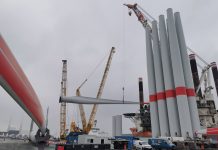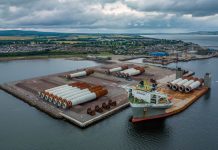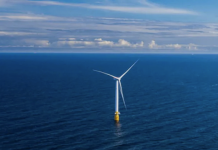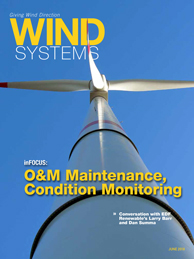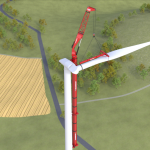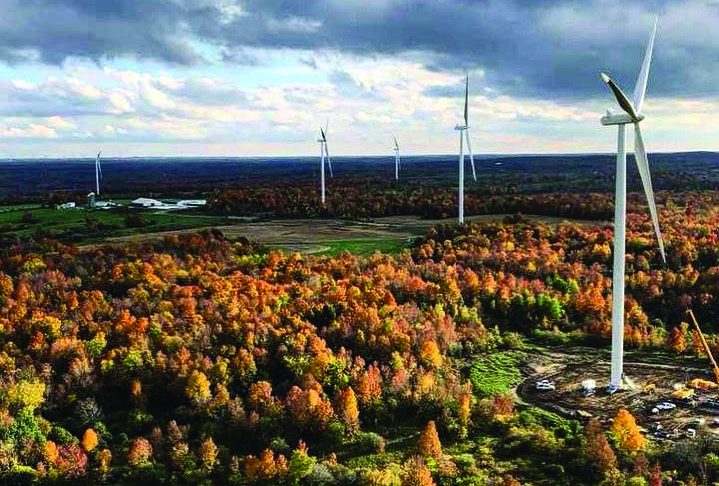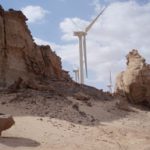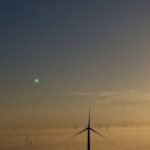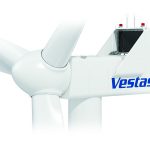Vessel suppliers and wind installation experts are collaborating to build new vessels and convert existing assets to bring rising turbine capacities to the booming U.S. offshore wind market, offshore experts told New Energy Update.
Surging growth in U.S. offshore wind activity has spurred a range of new vessel supply offerings and collaborations within the marine sector. Larger, higher-efficiency turbines and growing installation experience have dramatically reduced offshore wind costs, producing record-low tender prices in Europe and raising U.S. growth outlooks.
About 28 U.S. offshore wind projects totaling 23.7 GW were planned or under development by mid-2017, with most near-term projects planned in the North Atlantic region, figures from the U.S. Department of Energy (DOE) show.
The U.S. federal Bureau of Ocean Energy Management (BOEM) has awarded 13 commercial wind-energy leases off the Atlantic coast, and in April, it launched a lease sale proposal for two offshore wind sites offshore Massachusetts. BOEM also recently called for information on nominations to develop wind farms in New York State waters and launched an assessment of Atlantic coast waters for potential future offshore wind lease areas.
Also in April, Florida-based Aeolus Energy Group announced it plans to build a U.S.-flagged vessel fleet to serve the offshore wind sector, expecting to generate 4,000 jobs in the next couple of years.
“We are confident that offshore wind at scale has finally arrived in the U.S.,” said Elia Golfin, CEO of Aeolus Energy.
Aeolus will make “a considerable billion dollar” investment, Golfin said. The company plans to build jack-up vessels capable of installing 10- to 12-MW turbines, as well as cable ships to install medium- and high-voltage marine cables, service operations vessels to provide large-scale accommodation at sea, a fleet of crew transfer assets of vessels and helicopters, and port facilities in Massachusetts and Maryland.
The company will also invest in training facilities.
“During the construction season for offshore wind, we have a 24-hour work cycle,” Golfin said. “Staffing all of those jobs around the clock for months on end with qualified Americans is a significant challenge.”
Aeolus plans to have its first vessels ready for operation between the end of 2021 and early 2022.
Installation speed
In March, Seacor subsidiary Falcon Global and Norway’s Fred Olsen Wind Carrier agreed to jointly supply vessels and marine installation crews to the U.S. offshore wind market. Fred Olsen Windcarrier is one of Europe’s most experienced offshore wind installation groups and has installed more than 300 turbines to date.
The two companies have already combined to install the Block Island windfarm, the U.S.’s first utility-scale offshore wind farm, in 2016.
The new partnership will combine Fred Olsen Windcarrier’s fleet of wind-turbine installation vessels with Falcon Global feeder vessels. The Falcon Global fleet consists of one of the largest existing U.S.-flag and Jones-Act compliant lift boats.
The Jones Act requires that vessels transporting cargo between offshore wind farms and U.S. ports must be built in the U.S.

(Courtesy: Falcon Global)
By using a Fred Olsen installation vessel at the Block Island site and smaller U.S. flagged feeder vessels to move wind-farm components such as towers and blades, the project partners were able to complete the installation 25 percent faster than expected.
This accelerated installation process offset extra costs of using feeder vessels and reduced the risk of weather affecting project schedules and staff safety, according to Joseph Orgeron, special projects manager at Falcon Global.
“It is more expensive to do the feedering, but this (extra cost) is very negligible in the overall expenses of the installation process,” Orgeron said.
Larger turbines
By the end of 2019, offshore engineering group Zentech and Renewable Resources International plan to launch the first Jonas Act-compliant offshore wind jack-up installation vessel, said Andy Geissbuehler, managing director at Renewables Resources International.
The partners will convert an existing Jonas Act-compliant vessel into a jack-up offshore wind installation vessel at about half the cost of a new vessel, Geissbuehler said. The converted vessel will be able to navigate the New Bedford Hurricane Barrier in Massachusetts, an area that most of the larger existing vessels cannot access.
The launch date for the vessel was delayed after GE announced in March it planned to launch a 12-MW offshore turbine, the world’s largest, by 2021.
GE’s Haliade X turbine will be 250 meters tall and represents a significant advancement in offshore turbine capacity. Last year, Denmark’s Orsted installed the world’s first 8-MW turbines in the U.K., and the average capacity of newly installed turbines was 5.9 GW.
“We are in the process to upgrade several aspects of the vessel including an even bigger crane,” Geissbuehler said. “We are making some critical design changes, and this vessel is going to be much more powerful than initially planned.”
The vessel will be able to transport equipment from onshore to the offshore wind-farm site and perform installation, a process used in Europe.
“As wind farms get bigger, the feeder barge solution is becoming less and less attractive, except if you build very fast and very large feeder barges, which would be really expensive,” Geissbuehler said.
According to Orgeron, Falcon Global and Norway’s Fred Olsen Wind Carrier’s fleet can handle the vast majority of turbines available for installation, and no extra investment is planned in the short term.
“For the GE 12-MW turbine that was recently announced … we are currently still working through the optimizations for those types of next-generation turbines, and whether they can be done with our existing assets,” Orgeron said.
Source: New Energy Update
For more information, go to www.newenergyupdate.com
















